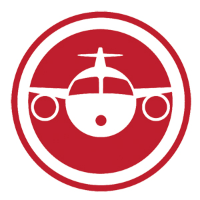First-time MEBAA exhibitor Indochina Aviation Centre (Stand 936) is here to introduce potential customers to travel opportunities in the Mekong region and to meet with current partners and clients. “We want to tell people that the region is open,” said Indochina Aviation director and founder Christian Mosebach. “People might not think about traveling to the region, and we want to make them feel more confident.”
Indochina Aviation Centre was founded in 2012 to provide ground handling and trip planning services in Myanmar and Cambodia, initially for airlines. A year later, the company added business aviation, government and military customers in the entire Mekong region, which includes Thailand, Cambodia, Laos, Vietnam and Myanmar. Indochina Aviation’s services include ground handling, permits, catering, hotel arrangements and fuel access as well as arrangements through a sister company for tailor-made trips and tours.
From the beginning, Mosebach made sure that Indochina Aviation put in place its own personnel in each country, people with local backgrounds, but who have lived and been educated abroad. The company does all of its own training to ensure a consistent level of service and is an approved training organization for Myanmar and an IATAexamination center.
Roughly 60 percent of Indochina Aviation’s ground handling and permit arrangements come from business aviation customers, according to Mosebach. The company was hired to make all the ground handling arrangements for U.S. President Obama’s visit to Laos in September.
All Indochina Aviation operations are managed by a central control office in Bangkok, which is open 24/7 and briefs local teams based at airports throughout the Mekong region. Company operations-planning specialists are also responsible for customer invoicing, including incorporating third-party billing from other suppliers, and this ensures that accurate invoices are sent to customers, he explained. Indochina Aviation welcomes questions from clients or any operators needing to understand how to fly in the Mekong region, because they will likely become future customers.
As the only ground handling service provider in the Mekong region, Indochina Aviation often works with other handling companies to serve their customers. Business aviation activity has grown in the region, especially in Myanmar where there are 33 airports available for business aviation travelers. Some of these are seasonally busy, and five airports in the country are typically used by customers on a frequent basis. On December 1, Indochina Aviation added full-time ground handling personnel in Mandalay.
Other growth areas in the region include Kawthaung and Savannahkhet (in Laos) and Haiphong (in Vietnam), where investments in tourism are growing. “Many secondary and smaller airports are becoming more popular,” he said, especially in areas where manufacturers are looking for land to build factories away from expensive metropolitan areas. This is especially true in Cambodia and Vietnam.
Business aviation operators traveling to the Mekong region come primarily from Europe, North America, the Middle East and Asia. Runways at the region’s airports are in relatively good condition, he said, but many facilities are basic, and not all airports are open for night operations. Many lack ground-support equipment, which must be sourced from local airlines, but when doing this, Indochina Aviation takes full responsibility for use of the equipment, according to Mosebach.
Customs and immigration services are available at the larger airports, but at some smaller airports, Indochina Aviation can arrange to transport customs and immigration officials to the airport to clear arriving aircraft. Indochina Aviation is often in the position of educating officials about business aviation, for example, the need to make frequent changes to a flight plan. “Typically, they’re very supportive of business aviation,” he said.
Mosebach is well aware that his company’s 100 employees must deliver outstanding service. “We want long-term relations,” he said. “We’re in the hospitality business, and we want return business.”
Source: AIN Online



